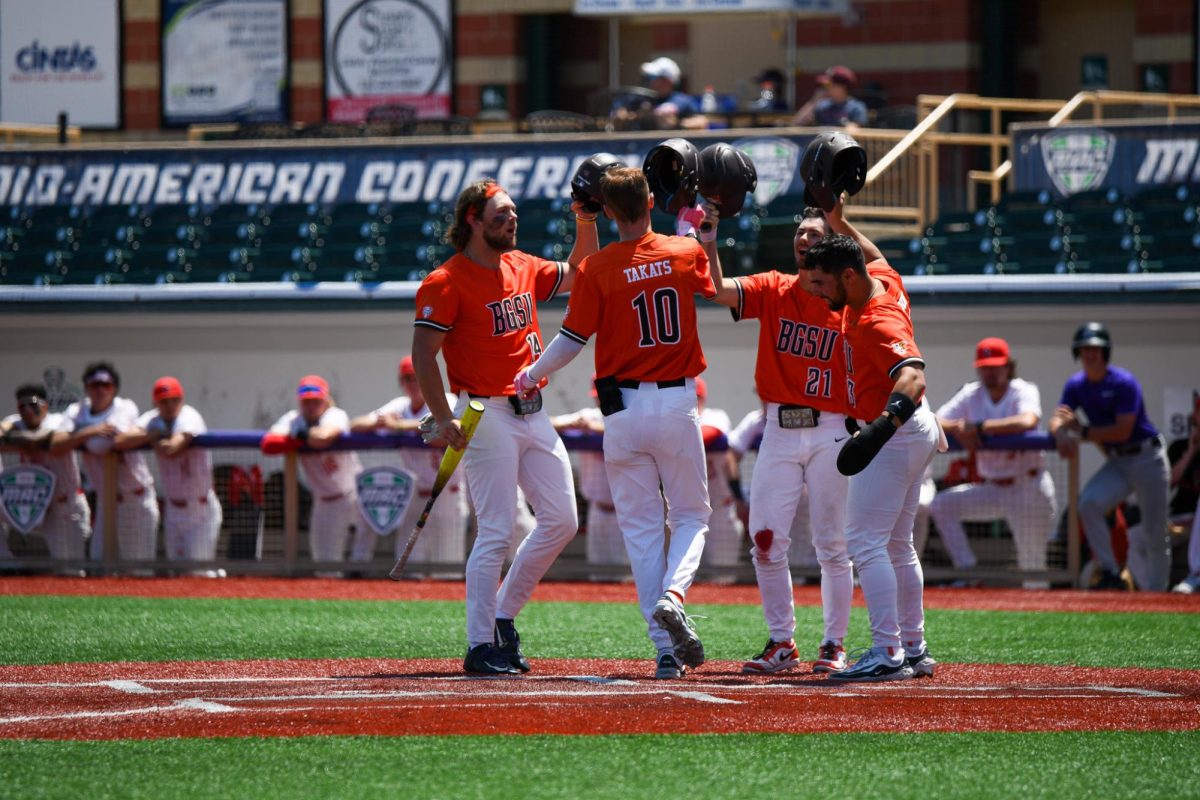City Arborist David Bieneman may not be a surgeon, but he is equipped with the knowledge and precision it takes to make the right cuts in life-and-death situations.
“Whenever you prune a tree you open it up to pathogens, insects and disease,” Bieneman explained at yesterday’s tree pruning seminar.
When Bieneman was hired as the city’s first arborist in 2003, he said some of the trees around the city hadn’t been pruned in more than 40 years. This is a big problem because cuts made to limbs bigger than two inches in diameter put the tree at an even greater risk, he said.
But with the proper techniques, Bieneman and his crew were able to tame Bowling Green’s urban forest.
There are some simple rules to follow when pruning trees that will ensure a strong, desirable core and will ultimately result in less maintenance as the tree matures, Bieneman said.
If a tree is never pruned, the overgrowth will catch wind like a kite, causing more damage to the tree. Bieneman said a good rule is to only prune 10 percent of a small tree and to make sure to leave two-thirds of the tree’s foliage.
Branches that should be pruned are ones that cross through the middle of the tree, rub against other branches or pose as a threat to their surroundings, Bieneman said.
According to a recent study at the University of Florida, pruning increases the tree’s elasticity, which means pruning is a great form of defense against Bowling Green’s relentless winds.
How much to cut is just as important as how to cut.
Dick Horton, member of the city’s tree commission, said he attended the seminar for his trees at home.
“I’ve got an ornamental tree in my front yard that’s been there for years and needs pruning. I’ve just been scared to mess it up,” Horton said.
An easy mistake people make when pruning is they cut off all the limbs on a branch except for the outer limbs, a mistake Bieneman refers to as “lion tailing” because of the resemblance. He said branches that have been lion tailed are much more liable to break in strong winds.
But the most frequent mistake people make while pruning is the way they cut the branch down.
In the old days, Bieneman said cuts were made at the branch bark ridge, as close to the trunk as possible.
This is bad because it exposes the xylem, cambium and phloem, the innards of the tree and damages, he said.
Making a 45 degree angle cut at the branch collar is the proper way to prune a tree because it does not damage any trunk or parent tissues that work essentially as the tree’s white blood cells, Bieneman said.
A cut should never be made with a loper unless it is a very small branch, he said. And the loper should only be used to make a rough cut to alleviate the majority of the branch’s weight.
A handheld saw must always be used to make a clean final cut at the branch collar, Bieneman added.
If the branch is too large for the loper to make the rough cut, a handheld saw can be used by making an undercut about halfway deep and then a cut on top of the branch about an inch higher, also halfway deep. Bieneman said the undercut will prevent the tree’s xylem, cambium and phloem from becoming exposed, while the top cut will help the branch fall.
Dominic Picciuto, who works in Bieneman’s tree trimming task force, said he has seen a lot of trees around the city that have had their tops loped off.
“[People] cut the tops off and that’s probably the worst thing you can do to a tree. And you see a lot of them, unfortunately,” Picciuto said.
Bieneman said November is the best month for pruning and that young trees should continue to receive about 20 gallons of water per week up until the ground freezes for winter.
On average a tree should be pruned once every three to five years, Bieneman said.
The next seminar will be held Nov. 28 from 8 to 11:30 a.m. at the Simpson Building Conference Room and will address plant health care.
The tree seminars are sponsored by the Bowling Green Tree Commission.

















